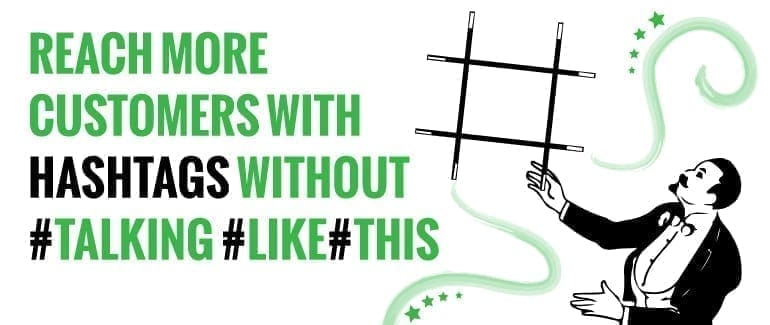Hashtags have become a household term, an important social media optimization tactic and also a cultural communication phenomenon.
First conceived by Twitter's early adopters to aggregate tweets based on topic, hashtags have since grown to exist also on Facebook, Google+, Pinterest and Instagram.
As defined by Twitter, “The # symbol, called a hashtag, is used to mark keywords or topics in a Tweet. It was created organically by Twitter users as a way to categorize messages.” They are used to help users find content that other users (and businesses!) want to be found for.
Hashtags are perhaps most commonly known not for their real life application, but for the cultural, communication phenomenon that they have become. Hashtags have become commonplace in everyday conversation as a sort of “aside” or something that someone wouldn’t otherwise openly say. However, they are an immensely useful and valuable tool for businesses trying to generate awareness for their brand on social media.
4 types of hashtags that make sense for meeting business objectives:
1. Branded Hashtags: These hashtags are started by your business to reflect your brand or a particular campaign you are running. For example, #TheDigest or #HobokenHappenings. This type has 2 major advantages. First, if the campaign is successful it helps generate buzz around your brand, attract followers, and potentially customers. Second, if it is a more general brand hashtag, it helps users who see your content easily see more, similar content by clicking on the hashtag.
2.Campaign: These hashtags are a type of branded hashtag, and can but don’t necessarily have to include your brand or product in the hashtag. They are unique to you and your campaign, and are generally used to garner awareness around a campaign or activity rather than your brand as a whole. For example, AMEX, in addition to #AMEX, utilizes #passionproject to generate awareness around their customer engagement campaign. #passionproject is specific to their campaign and helps users generate engagement and awarness around this specific campaign.
One of the most common mistakes we see, is businesses who only utilize branded or campaign hashtags that they created. They can be very useful, but particularly for small businesses the non-branded ones listed below will help get more eyes on your content and hopefully generate more engagement and awarness around for your business, its products and services.
3. Non-Brand Hashtags: Non-branded hashtags like #hoboken #holidays #nj and #fashionista are more general and already being used across social media channels. For this reason your content will show up amongst other content tagged with these hashtags and in front of users looking for content on these topics. It helps amplify your content, in a sense, and get more eyes on your brand, content and what you have to offer.
4. Trend-Jacking: These hashtags refer to existing hashtags that are “trending” or otherwise deemed very popular across social media. Examples include but are not limited to #SuperBowl #Olympics #Grammys2014 #VMAs2013, etc. They typically surround events, but could also include things like #thanksgiving, #holidays and #snowday. These types of hashtags help you not only show up amongst other trending, popular content, but also give you a chance to show the more human side of your business, which is more relatable to potential customers, specially on social platforms. They are called “social” platforms, afterall.
There are two additional notions that are important to consider. First, hashtags can only include letters and numbers, no spaces or punctuation. Second, hashtags should be tested before they are used. Try searching the hashtag you want to use on the platform you want to use it on. Make sure that it, if it is already being used, it is in the same way you intend to use it – or at least not a conflicting way. This holds particularly true for acronym hashtags.
For local businesses I have seen the most success with hashtags on Instagram. Local community pride means a lot and community members seem to want to search for what is being shared in their neck of the woods. #Hoboken for example, seems to also automatically generate more engagement on local brand photos.
This is the perfect time of the year to start testing out hashtags to generate more awareness of your brand. The holiday season lends itsself to photo sharing, and social media enagement, not to mention the use of wildly popular hashtags such as #holidays, #holidays2013, #NYE, etc. Start by testing out hashtags that you would like to start using on each platform you want to use them on. If the content that shows up looks like content you want to show up with, then start using them in your content. Watch closely to see if those posts generate more "like" comments and the like. Don't forget to keep it relevant to target audience! #Hoboken #Hudson #NYC and #NJ are all hugely valuable, so don't leave them out!
#HappyHolidays and #HappyHashtagging
By day Brittany is a digital marketing professional working for iProspect, an NYC agency recently named 'Best Agency for Performance Marketing' for the second consecutive year. By night Brittany is a Hoboken enthusiast and foodie obsessed with South Park and all things DIY. She gets a thrill from a good bargain and enjoys Atlantic City more than is probably socially acceptable.
- This author does not have any more posts.


